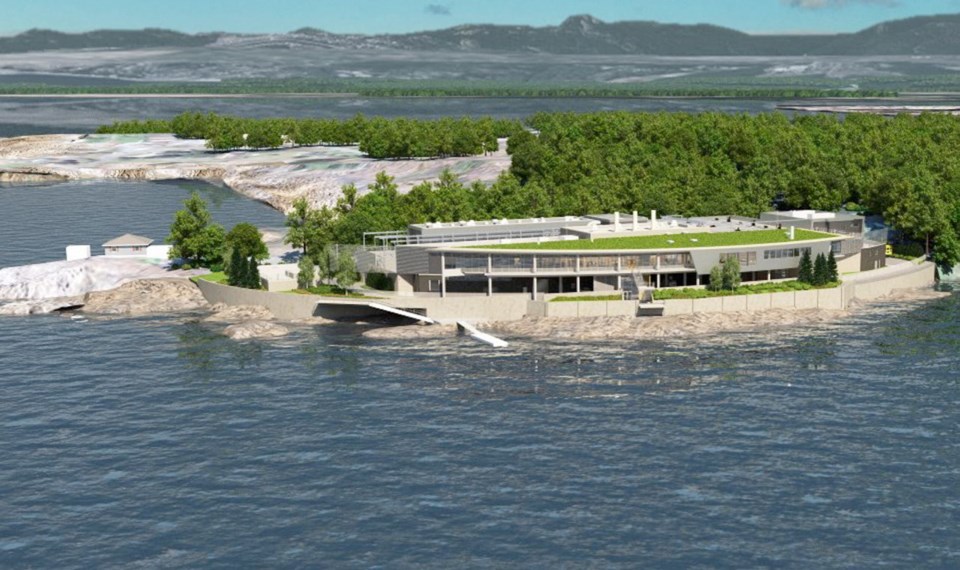The Capital Regional District should go back to the province for help in finding a solution to its sewage treatment dilemma — only this time it should knock on a different door, says Saanich Mayor Frank Leonard.
Environment Minister Mary Polak said Tuesday that the province will leave it to local governments to resolve their dispute and will not override Esquimalt’s refusal to rezone McLoughlin Point for a regional sewage treatment plant.
Leonard wants the Capital Regional District to formally approach Minister of Community Sport and Cultural Development Coralee Oakes, who is responsible for local government, for help in resolving the impasse.
“There’s a menu that the minister [can use] to help municipalities from time to time — fact finder, facilitator, mediator or arbitrator,” Leonard said.
“I wouldn’t be prescriptive in terms of the invitation to her to come and help, but I think given the number of years we’ve been at this and the circumstances we find ourselves in, having the government help us move to the next stage would be worthwhile,” Leonard said.
“We’ve got to figure out how we do what’s best for the environment and the taxpayers going forward. In some way, it’s a new reality when the government won’t use the [Environmental Management Act] when it has been used in past history,” he said.
The CRD had asked that Polak exercise her authority under the Environmental Management Act to suspend provisions of Esquimalt’s zoning bylaw that stand in the way of the CRD proceeding with building a plant at McLoughlin Point.
The request certainly wasn’t without precedent. Twenty years ago a provincial order was issued allowing the expansion of Hartland Landfill.
The province’s refusal to break the impasse with Esquimalt left many local politicians scratching their heads about what to do next.
“I really don’t know what the CRD can do next,” said Victoria Mayor Dean Fortin.
“It’s taken us 10 years to get to here, so are we going to get an extension for 10 more years to figure out the next plan?”
Langford Coun. Denise Blackwell, past chairwoman of the CRD’s core area liquid waste management committee, was at a loss to understand why the province refused to intervene.
“The legislation actually contemplated this very event. So if they can’t use it for what it was designed for, I don’t know why they even have it in there,” she said.
Esquimalt Mayor Barb Desjardins, meanwhile, wants different options explored, including multiple plants.
“I’ve always said a distributed system has a lot of opportunities,” she said.
“Everyone participates and everyone has their opportunity to make their own decisions about where they want their sewage treatment plant.
“There is so much opportunity for a different plan, but we needed open minds, and I think this decision from the minister says, ‘This is not an avenue you can take. You need to change.’ ”
Blackwell said the distributed model was explored but rejected as too expensive.
“The more plants you have the more money it costs,” she said.
Fortin said the province’s decision won’t make it easy to find acceptable sites when a municipality can refuse to zone it.
“I do not know how we’re going to find one, two, three or four sites [for a distributed system],” Fortin said.
Green Party MLA Andrew Weaver said the CRD has taken so long on the issue that it has lost the public trust.
“The message being sent is, essentially, ‘Get your act together CRD. Get the social licence. Bring in the municipalities and put forward a solution that everyone can buy into.’ ”
Richard Atwell, a director with the Sewage Treatment Action Group, agreed.
“It certainly supports our position that the public consultation wasn’t done properly and I think the province understood that, that the public wasn’t on board with the plan and in fact there are other opportunities and other plans that haven’t been fully looked at.”
Weaver believes the district should be looking at an approach that treats both organic matter and toxins.
“It stops those from going back in the ocean, because it’s those that are causing the environmental effects.”



